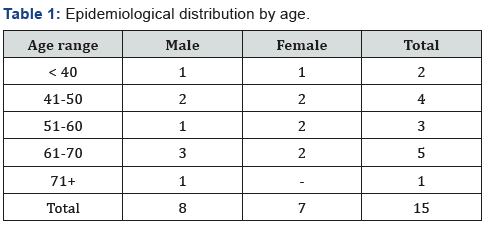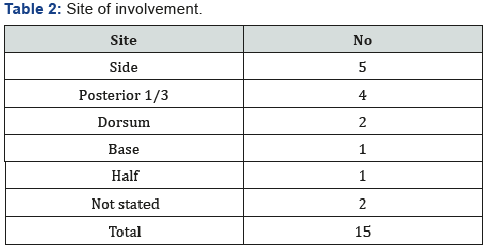Squamous Cell Carcinoma of The Tongue in A Developing Community- Juniper publishers
Juniper Publishers- Journal of cell science
Abstract
Squamous cell carcinoma of the tongue is characterized by malignant cells which show squamous differentiation in the direction of “formation of keratin and/or the presence of intercellular bridges.” As single case reports have appeared in the literature recently, this paper presents a good number of them traced among the Ibo ethnic group in Nigeria, this being facilitated by the author who heads an institution that provides a histopathology data pool.
Keywords: Tongue; Malignancy; Squamous cell carcinoma; Epidemiology; Developing community
Introduction
Squamous cell carcinoma is defined as “a malignant epithelial neoplasm exhibiting squamous differentiation as characterized by the formation of keratin and/or the presence of intercellular bridges” [1]. This was illustrated in a case report from India [1] as well as from Saudi Arabia [2] and from the UK [3]. Therefore, this paper presents a series from the Ibo ethnic group’s developing community [4], this being done on account of the author’s headship of a histopathology data pool such as the one fostered by a Birmingham (UK) group [5]. To facilitate matters, the tabular form is used as shown hereunder.
Results
Table 1


Table 2
In contrast, only few of the published cases designated the sites, including
1) Side
2) Lateral border
3) Margin.
Discussion
Wide interest in squamous cell carcinomas of the tongue is shown in the publications which have appeared recently in countries as far apart as China [6], France [7], UK [8] and USA [9,10]. Therefore, the local cohort ought to be compared with them. In this context, the mean age was given as 60 years from India [1]. Age stands out. The Chinese group was aged 28 to 88 years, but the mean age was not apparent [6]. The local cohort was aged 34 years to 79 years (mean 56 years). As to sex, the local cohort was almost equal. It was disparate in China to the tune of 102 males to 83 females [6]. What stood out was a rare histological variant. It was reported from Spain [11]. It turned out to be the infrequent and aggressive “spindle cell type” that featured in a 11-year-old boy.
For more Open access journals
please visit our site: Juniper Publishers
For more articles please click
on Journal of Cell Science & Molecular
Biology




Comments
Post a Comment